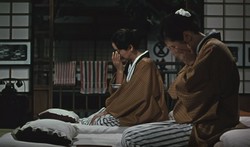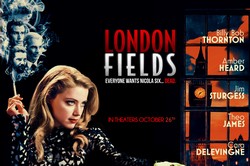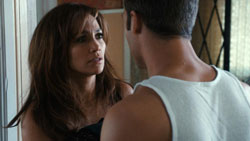Actors go to great lengths for their roles. From chopping off all of their hair to gaining or losing severe amounts of weight, actors are dedicated to their craft.
While you may watch the entirety of a film and simply continue on with your life, many films can leave an impact that is everlasting.
I know for myself, the ending scenes of A Walk to Remember, A Star is Born, and The Bodyguard provoke such strong emotions that I end up in tears regardless of it being the first or 20th viewing.
One thing they all have in common? A tremendously impactful scene where one of the characters displays raw emotion and true vulnerability. It may seem like something that should be in the actor’s blood, but not every actor is capable of such an astounding performance.
While the actor is the vessel that carries the script or depiction of a novel gone cinematic, the director gives cues that can either make or break a scene. For example, Yasujirō Ozu, a famous Japanese director from the 20th century, used camera shots that would center on the actor and have them bury their face in their hands.
Some of Ozu’s work was silent films given the era, so the dramatization of the performer’s actions was imperative for an intense emotional scene.
Christopher Tuttle, a senior english major who has performed in musicals on campus such as Anything Goes and Spring Awakening, described his idea of a good emotional scene.
“You know you have done the scene right when you get some sort of reaction from the audience; it makes you realize that what you did was believeable and that it stuck with who you are trying to portray it to,” said Tuttle.
He continued with,“This does not have to be through crying, there are many ways to create emotion. While crying can help a scene, it can also hinder it.”
You might wonder, how is it possible for actors to cry on command? The answer is simpler than you would think.
The term “memory driven tears” is a method employed by actors to provide the best emotional scene they can physically give. An actor may think of a sad memory in their life that caused them great pain, and by recalling that memory, they are taken back to that place.
Being taken back to a hard time in life will make anyone shed a tear or two, so it comes as no surprise that an actor would use this technique.
If all else fails and past memories just don’t do the trick, there are other methods that have been used to make actors appear as if they cried.
Makeup artists will use eye drops or vaseline to give off a glossy eyed effect. This may not always be completely necessary, but it aids the actor in the process of crying.
They might need that extra push to fully commit to the scene, and these products give off a realistic, tear-stained face.
The best crying scenes of all time are given that title for a variety of reasons. I don’t believe that the act of crying is the sole reason they are so captivating.
For example, Precious touches on heavy content that can hit home for a viewer and take them back to a time in their life where they were experiencing similar traumas.
A film that relates to someone could deserve the title of a great film. The advancement of the plot and the development of the characters also leads you to be deeply invested in the film, causing you to produce your own emotions when something goes awry.
“When I am performing an emotional scene, I think about two things: how can I relate it to something that I have gone through personally and what is the best way to get this emotion across to the audience” stated Tuttle.
I can crank out a few sad plotlines off the top of my head; deceased parent, low socioeconomic status, toxic relationships, the list goes on. While all of these topics are objectively sad, only few can create an impact given the correct actors and plotline.
“The best directors have taught me to just be real with my emotion and not try to force it. That can cause a scene to become misrepresented,” Tuttle concluded.
If an actor and director can successfully bring a story to life and give it meaning beyond the scope of generalities and vagueness, it can really take the viewer to a special place.
Whether or not the perfect emotional scene involves tears is up to you and me. Whitney Houston on a plane flying away from her lover while “I Will Always Love You” plays in the background will always be a tear-jerker for me, even though Houston barely shed a tear.
PHOTO COURTESY of Thought Criminal YouTube




